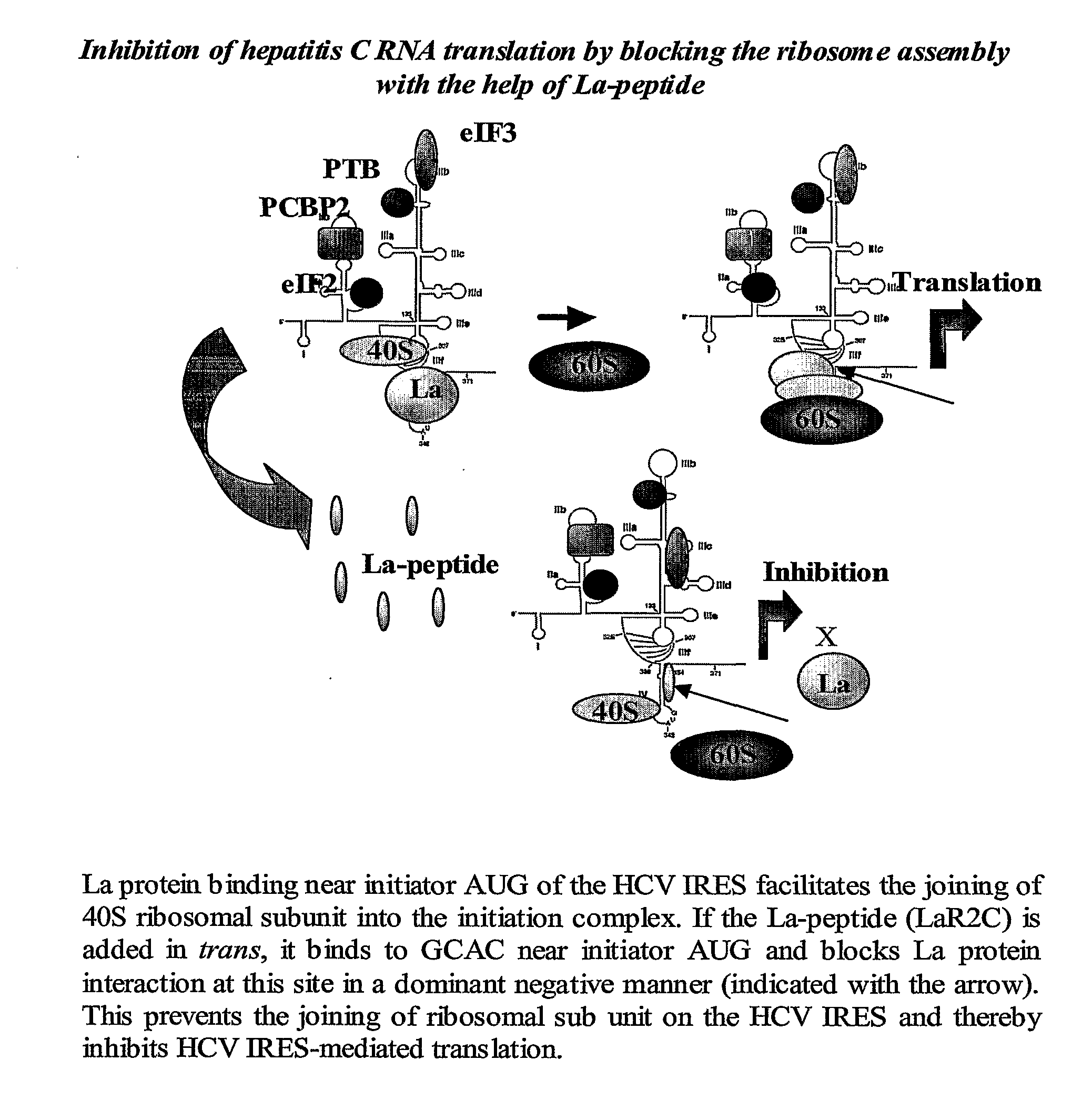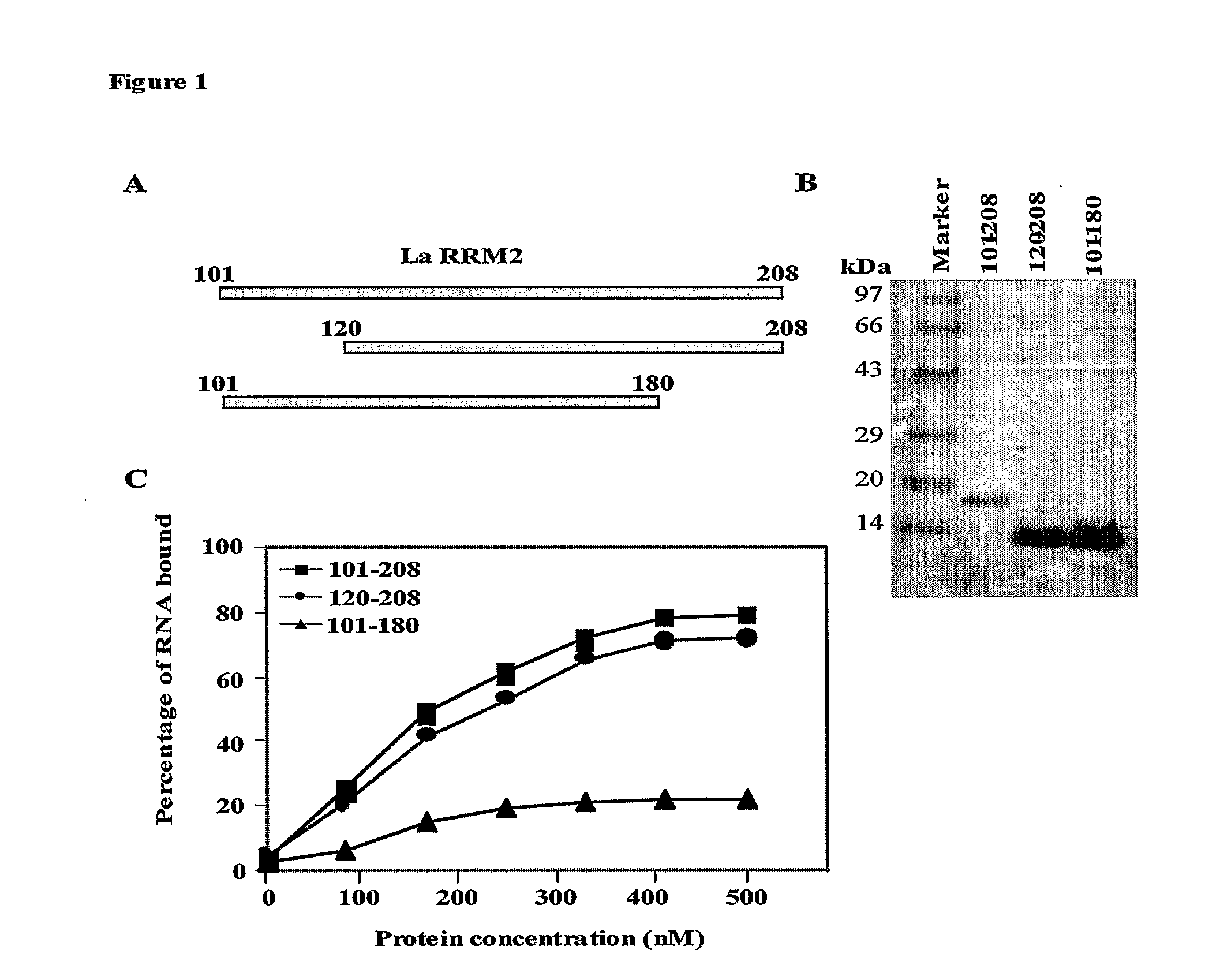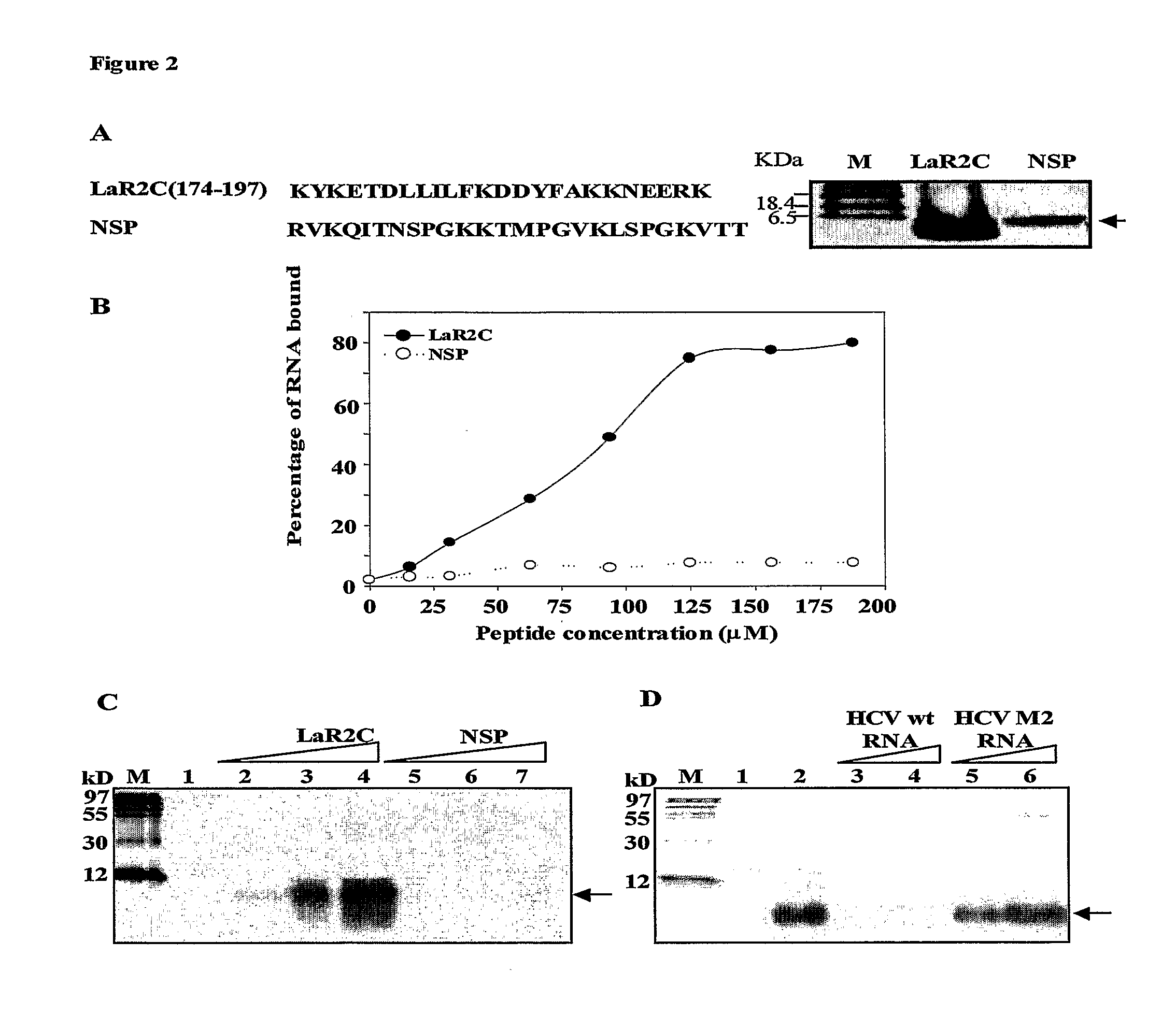Antiviral Peptide Against Hepatitis C Virus
a technology of antiviral peptides and hepatitis c virus, which is applied in the direction of peptide/protein ingredients, peptide sources, applications, etc., can solve the problems of inability to maintain the stability of peptides inside cells, and the inability to achieve sustained virological response in the majority of patients, so as to improve the efficiency of viral rna translation and high affinity
- Summary
- Abstract
- Description
- Claims
- Application Information
AI Technical Summary
Benefits of technology
Problems solved by technology
Method used
Image
Examples
Embodiment Construction
:
Experimental Approach & Results
[0012]a. RRM2 of La protein binds to HCV IRES through its C-terminal residues
[0013]Previously, it has been shown that RRM2 of La protein binds to HCV IRES with high affinity. To precisely identify the region that is important for the binding, two deletion constructs of La-RRM2 (La100-180 and La120-208) with deletions of 20 aminoacids from N-terminus and 28 aminoacids from C-terminal region were generated (FIG. 1A). The over-expressed and purified proteins were analyzed by gel electrophoresis followed by silver staining (FIG. 1B) and used to study their ability to bind HCV IRES RNA using filter-binding assay. [32P] labeled HCV IRES RNA was incubated with increasing concentration of La-RRM2 (La100-208), La100-180 or La120-208 proteins in RNA-binding buffer. The RNA-protein complexes were bound to nitrocellulose filters and washed with binding buffer to remove unbound RNA. The counts retained were plotted against the protein concentration to obtain satur...
PUM
| Property | Measurement | Unit |
|---|---|---|
| time | aaaaa | aaaaa |
| time | aaaaa | aaaaa |
| time | aaaaa | aaaaa |
Abstract
Description
Claims
Application Information
 Login to View More
Login to View More - R&D
- Intellectual Property
- Life Sciences
- Materials
- Tech Scout
- Unparalleled Data Quality
- Higher Quality Content
- 60% Fewer Hallucinations
Browse by: Latest US Patents, China's latest patents, Technical Efficacy Thesaurus, Application Domain, Technology Topic, Popular Technical Reports.
© 2025 PatSnap. All rights reserved.Legal|Privacy policy|Modern Slavery Act Transparency Statement|Sitemap|About US| Contact US: help@patsnap.com



